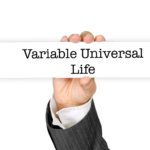What is Variable Universal Life (VUL) Insurance?
 Variable universal life (VUL) is a type of permanent life insurance policy with a built-in savings component that allows for the investment of the cash value. Like standard universal life insurance, the premium is flexible. VUL policies typically have both a maximum cap and minimum floor on the investment return associated with the savings component.
Variable universal life (VUL) is a type of permanent life insurance policy with a built-in savings component that allows for the investment of the cash value. Like standard universal life insurance, the premium is flexible. VUL policies typically have both a maximum cap and minimum floor on the investment return associated with the savings component.
The Basics of Variable Universal Life Insurance
Variable universal life insurance has variable sub-accounts that allow for the investment of the cash value. The function of the sub-accounts is similar to a mutual fund. Exposure to market fluctuations can generate significant returns but could also result in substantial losses. This insurance gets its name from the varying results of investment in the ever-fluctuating market.
How Variable Universal Life Insurance Works
Like universal life insurance, variable universal life insurance combines a savings component with a separate death benefit, allowing for greater flexibility in managing the policy. Premiums are paid into the savings component. For a variable universal life insurance policy, the savings element consists of separately managed accounts, referred to as sub-accounts. Each year, the life insurer deducts what it needs to cover mortality and administrative costs. The rest remains in the separate accounts to earn further interest.
In a whole life policy, the life insurer assumes the investment risk by guaranteeing a minimum cash value growth. By separating the savings component and the death benefit component, the life insurer transfers the investment risk of the VUL to the insured. The insured must assume the likelihood that the separate account may generate negative returns, which will reduce the cash value. Significant and sustained losses compromise the cash value. As a result, the insured may need to remit higher premium payments to cover the cost of the insurance and rebuild the cash value.
Variable Universal Life Sub-Accounts
The separate sub-account is structured like a family of mutual funds. Each has an array of stock and bond accounts, along with a money market option. Some policies restrict the number of transfers into and out of the funds. If a policyholder has exceeded the number of transfers in a year and the account in which funds are invested performs poorly, they may need to pay a higher premium to cover the cost of insurance. In addition to the standard administration and mortality fees paid by the policyholder each year, the sub-accounts deduct management fees that can range from 0.05% to 2%. Because the sub-accounts are securities, the life insurance representative must be a licensed producer and registered with the Financial Industry Regulatory Authority (FINRA).
The growth of the variable universal life policy’s cash value is tax-deferred. Policyholders may access their cash value by taking a withdrawal or by borrowing funds. However, if the cash value falls below a specific level, additional premium payments must be made to prevent the policy from lapsing.


